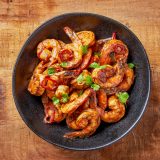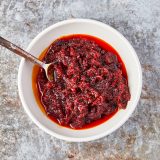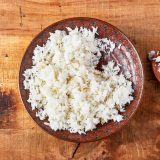Standing under the feathery, fern-like leaves of a tamarind tree, Pearly Kee recalls gathering its bulbous brown pods that fell to the ground when she was a child in Penang. The wildly tart pulp scraped from them brightens all manner of Malaysian foods, from spicy broths with stingray and okra to deep-fried mackerel, even fried eggs with peppers and shallots.
It’s ubiquitous, yet her ancestors who came to this island five generations ago wouldn’t have recognized it.
“The Chinese had never eaten anything so sour, so they tried to mix and match it with flavors they knew,” she says, beginning to illuminate the mix of cultures here that came to be known as Nyonya cuisine. “In the old days, it was a discovery and fusion of all the food, but now it’s kitchen-tested over two hundred years.”
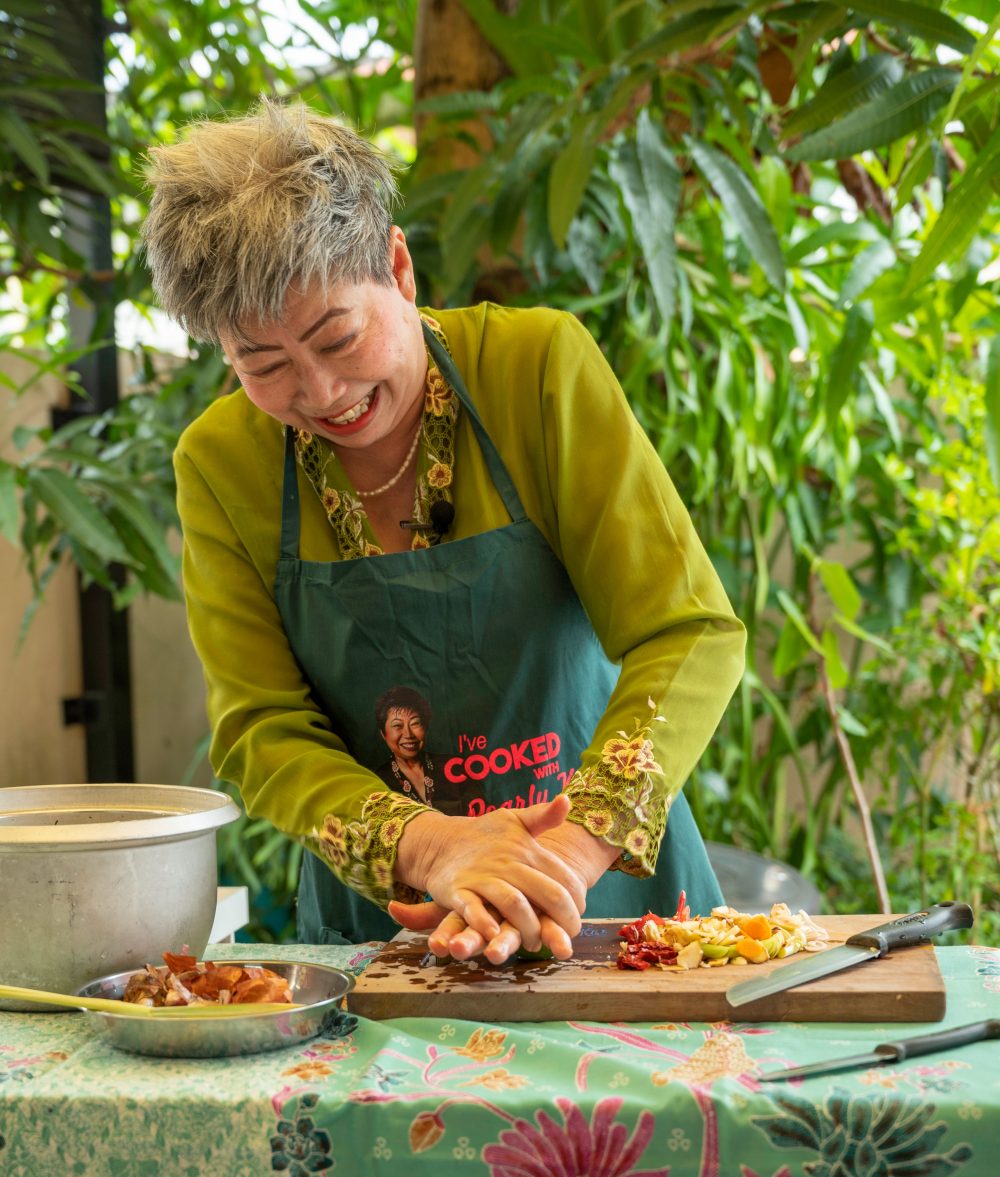
So goes Malaysian cooking, a delicious intermingling that is explosive, punchy, sweet and rich. Rarely subtle, recipes can include dozens of ingredients that somehow harmonize into exciting dishes shaped by waves of migrants from China and India.
The Nyonyas are one sliver of that multicultural legacy, the women descended from Chinese migrants who arrived as indentured workers. The men at first fended for themselves, cooking what and how they knew—stir-frying in a wok, usually with soy sauce, garlic and ginger. Then they began to marry their Malay neighbors, who introduced their pantry of coconut, shallots, sambal, lemon grass, galangal, turmeric, calamansi, countless herbs and, of course, tamarind. Sometimes all in one Nyonya dish. Often, more is more
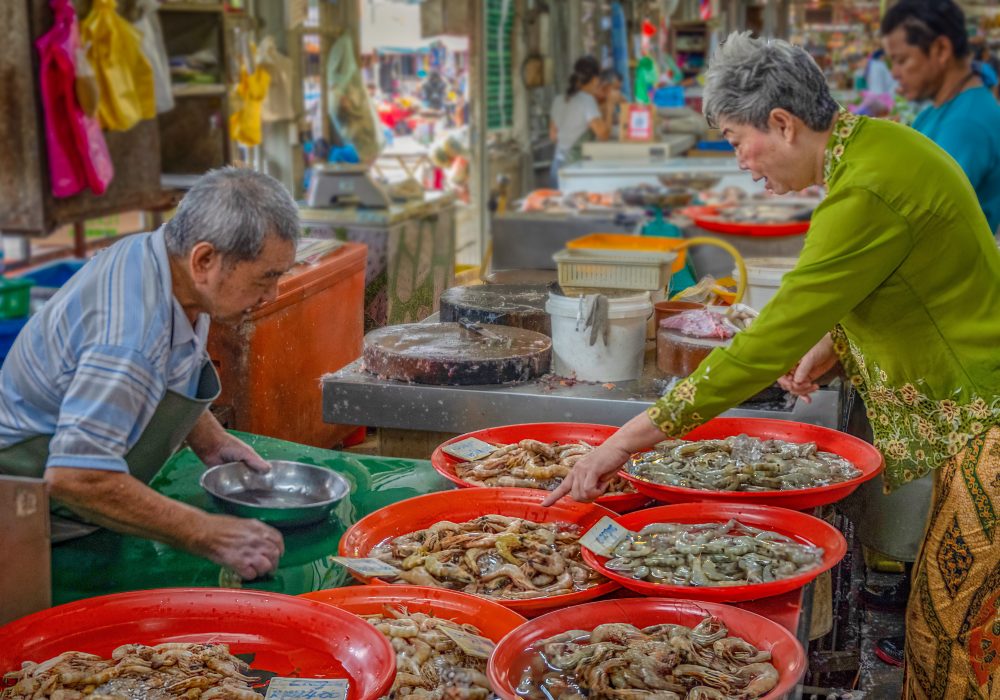
It’s a confluence of cultures apparent even in the simplest of dishes, including the tangy, savory-sweet tamarind-doused shrimp stir-fry called assam hae that Kee would teach me—and in the process introduce me to a startlingly easy trick for preventing the so-often-overcooked seafood from doing just that.
Kee and I round the corner from the tamarind tree to enter the Pulau Tikus Market. Past the woman chopping kilos of garlic on a wooden block, past the vendor descaling football-sized fish heads for curry. Kee gets a better price on prawns as large as my fist by speaking to the fishmonger in Hokkien, the Chinese dialect of their ancestors. Mounds of shell-on prawns are brusquely scooped and tossed into a cone of newspaper, followed by a scoop of loose ice for a makeshift cooler.
Armed with our prawns, we head to Kee’s house near the island’s capital, Georgetown. On the curb outside, she bends down to pluck navy blue flowers off a butterfly pea plant. The blooms are used as a natural dye in one of Malaysia’s signature rice dishes, nasi ulam. “This is the friendliest flower,” she says, more to the flower than me. “As much as you pick today, tomorrow it will give you more.”
Inside her courtyard, an outdoor kitchen sits in the shade of a 20-foot mango tree. We’re surrounded by herbs, pandan leaf, makrut lime, pineapple, custard apple and more. Besides the tamarind prawns, the meal will include five other dishes, as well as coconut rice, fiery homemade sambal, plates of herbs and sliced cucumbers, and a cordial made from the nutmeg fruit that surrounds the familiar spice. A typical spread for most family meals.
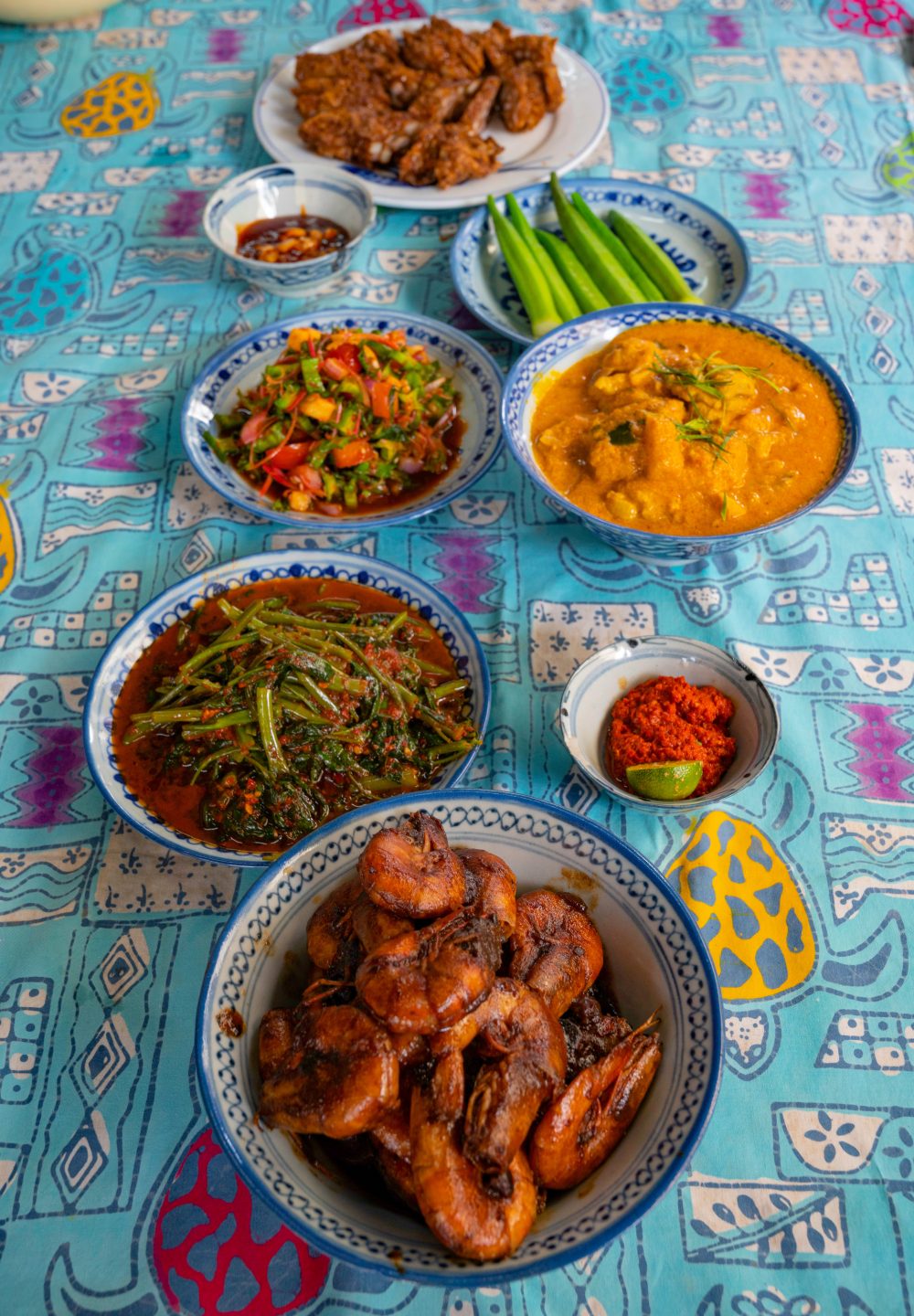
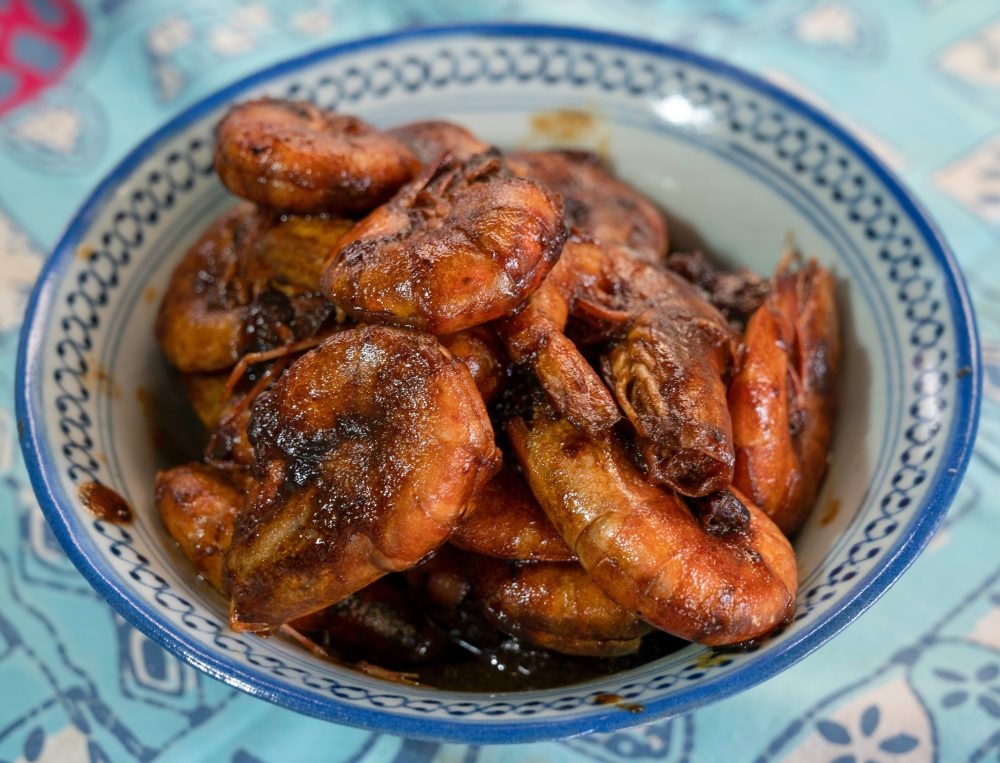
Because the prawns cook so fast, she saves their preparation for last, beginning by soaking the tamarind pulp in water. She mixes in palm sugar and kecap manis—a sweet, thick soy sauce with a molasses-like flavor common in Malaysia and Indonesia—then adds the shell-on prawns to marinate while preparing the rest.
Fried pork rolls with water chestnuts. Kapitan chicken, an aromatic curry that looks like Indian butter chicken but tastes fresher and brighter. Stir-fried water spinach with homemade sambal. Crisp blanched okra with more sambal. A riotous salad of four-corner beans, torch ginger, calamansi, fresh mint, oregano and yet more sambal.
The sambal chili paste is everywhere, required at every Malaysian meal. “If it’s not on the table,” says Kee, the author of “A Nyonya Inheritance” and other cookbooks, “I can’t eat without it.”
When it is time to prepare the prawns, I realize I was a bit off in calling it a stir-fry. There is little stirring at all, in fact, and that’s the key to the recipe’s success.
Kee heats oil in a wok and scoops the marinated prawns into it with a crackle and hiss. They get one good turn with a wok spatula, then sear for a minute. That’s when it gets interesting. Methodically, she uses the spatula to lift the prawns out of the oil over and over, and it soon becomes clear—with each lift, she’s cooling the prawns just enough so they don’t overcook. “This is how you fry,” she says, protectively lifting again.
Things are decidedly rougher for the sauce. Kee deliberately lets the sugar and bits of tamarind from the marinade deeply caramelize against the searing-hot pan. As the sauce chars, it’s enriched with a necessary bitterness that balances the sweet. In minutes, the prawns are done, the sauce reduced to a fine, flavorful glaze. Mildly tart and subtly sweet, the tender prawns shine with a scoop of coconut rice and requisite dab of spicy sambal.
The lesson is apparent: Cook the sauce more than the prawns. But when we tried to recreate the recipe, we ran into trouble. For one, we preferred the convenience of peeled shrimp, but without the protective layer of the shell, the risk of overcooking was even higher.
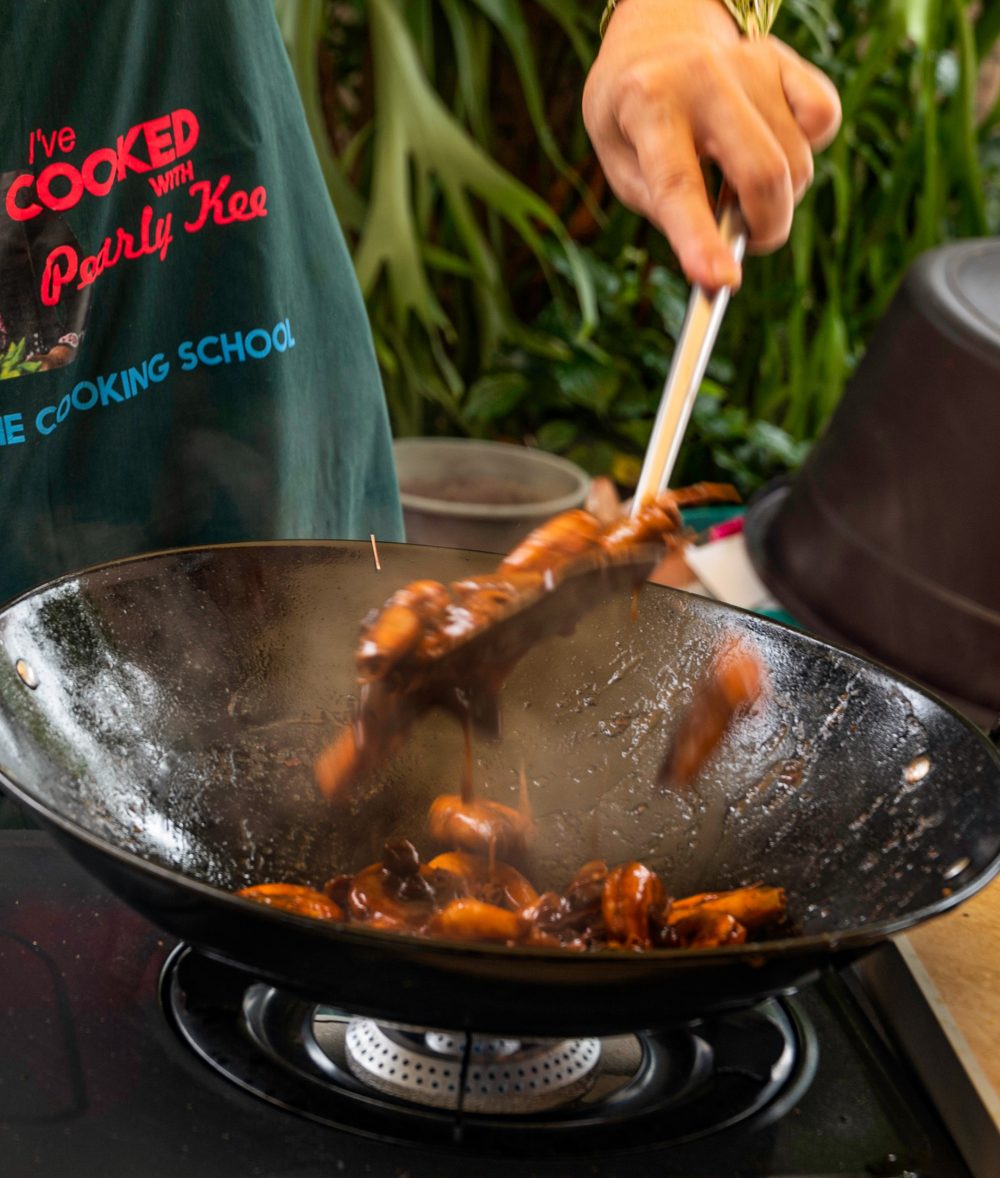
Since we didn’t have Kee’s expertise with the wok, we found a two-part solution. First, we seared the shrimp only on one side. This gave us the caramelization we wanted, but kept the cooking to a minimum, an easy way of replicating the gentle cooking of Kee’s lift method. Second, we cooked the shrimp in two batches, which allowed the shrimp enough space that they seared instead of simmered in too much sauce, which in our testing turned them rubbery.
And like Kee, we took a tougher approach to the sauce. We used it twice, initially as a light coating when first searing the shrimp, boosting flavor with a quick hit of caramelization. Then, when the second batch was nearly cooked, we poured in the remainder so it immediately reduced and concentrated when it hit the hot pan. Returning the first batch of shrimp to the pan a minute afterward gently reheated them in the thickened sauce.
We also found that different brands of tamarind pulp have widely variable consistencies, causing early tests to be either too gloppy or too watery. For that reason, we got the best results by first hydrating the pulp in boiling water, straining it, then adding more water to the strained pulp—enough to create ⅔ cup of tamarind liquid. The resulting liquid was mixed with the soy sauce and sugar to create just the right amount of sauce.
With those few tweaks, our tart tamarind shrimp came out saucy, satisfying and perfectly cooked, striking the ideal balance of savory and sweet.
